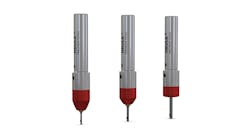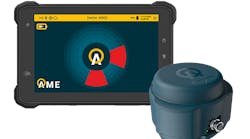Developing a National Forging Tooling Database (NFTD), which is part of the PRO-FAST initiative, re-establishes the lost relationships between replacement parts for legacy weapons and the tooling held by forging companies. PRO-FAST is jointly sponsored by the Defense Logistics Agency and the forging industry (Forging Industry Association and the Forging Defense Manufacturing Consortium).
From the DLA perspective, the primary purpose of the NFTD is to streamline the process for locating forging companies with the tooling to make mission critical parts so that war fighters have the weapons and weapon systems to do their job. It also helps to simplify and shorten the procurement process, leads to improved weapon availability, and avoids duplicating expensive tooling.
From the forging industry perspective, it provides an opportunity to make money from tools currently sitting in storage.
Working under the direction of the Advanced Technology Institute, a University of Toledo-led group is developing the NFTD. The need for the database arises from the large number of legacy weapons in use by the Department of Defense (DOD). Many of these weapons were designed and built decades ago.
As these weapons were created, supply chain participants were brought together to design the weapon, procure components, and manufacture the final product as shown in the diagram below. During this process, the information that links the various levels in the supply chain was embedded in the information systems of the participants. Over time the data formats used by supply chain participants became obsolete or companies closed their doors, so the information links between the DOD and the forging supplier were lost.
As forged parts on legacy weapons wear or fail, it is often difficult to find replacements. The tooling may exist, but its location is often unknown. The results are delays in administrative lead-time (100 or more days is typical) and excessive procurement costs, as Defense Logistics Agency procurements specialists search for a forging company to make the part.
Once a forging company with the capabilities and interest to make the part is located, further delays in production lead-time (100 or more days is again typical) and extra costs are incurred, as the company must make new tooling before making the forged part. Finding the tool quickly and easily dramatically shortens the administrative and production lead-times, and unnecessary tooling costs are avoided.
In today’s unstable global environment, eliminating delays and getting weapons back on line is essential to the safety and effectiveness of the war fighters. For forging companies the NFTD offers the opportunity to provide information about their resources and capabilities and to put tooling for legacy weapons to good and profitable use.
The NFTD 1) allows purchasers and suppliers to learn about part production history, who has the tooling, and the status of the tooling; 2) lowers acquisition costs; 3) reduces the need to duplicate tooling; 4) enables forging suppliers to determine when they can dispose of tooling thereby reducing their operating costs without impacting DOD requirements for replacement parts; and 5) provides mechanisms for matching the needs of purchasers with the capabilities of suppliers.
Implementation
The team of organizations working together to commercialize the NFTD has been working on it since late in 2003. The DLA is funding this project for use by the DOD and industry alike. The forging industry is matching these funds. The Advanced Technology Institute is managing the project. IHS, the developers of Haystack, is providing database design expertise, the software and hardware platform, and the ability to integrate the NFTD with existing procurement practices used by DOD. Plexus Systems supports tool management for forging companies, which allows forgers to organize, automate, and upload data to the NFTD.
A preliminary version of the NFTD has been in operation at the University of Toledo for several months. During that time, the database has expanded from information on a few hundred sets of tools at a half dozen forging companies to nearly 100,000 sets of tools at more than fifty forging companies. As data collection continues over the next 12 months, it is likely that this total could expand by 50 percent or more.
How can forging companies help?
Your tooling lists will help us match tools with forged parts needed by the DOD. There is no out-of-pocket cost for this service. Contact us: Mark A. Vonderembse or T.S. Ragu-Nathan, College of Business Administration, The University of Toledo, Toledo, OH 43606. Tel. 419-530-4319; fax 419-530-7744; or e-mail [email protected].
How Forgers Can Benefit from the NFTD
Wouldn’t it make sense to book orders for dies that are in your tool stacks? Over the years your forge has probably accumulated tons of tools for customers that supply parts and assemblies to the DOD.
By listing this tooling in the National Forging Tooling Database, you can achieve the following benefits:
1. Receive orders for forging dies that are rusting in your tool yard.
2. Supplement your marketing budget and increase sales by quickly connecting with DOD buyers or contractors.
3. Identify dies that are no longer needed by Department of Defense. With this information, you can re-sink the die for another customer or dispose of the tool, freeing up space, reducing operating costs, and cleaning up your tool yard. Such optimized use of dies, elimination of unneeded tools, and freeing up of die storage space all are part of creating a lean forging operation.









